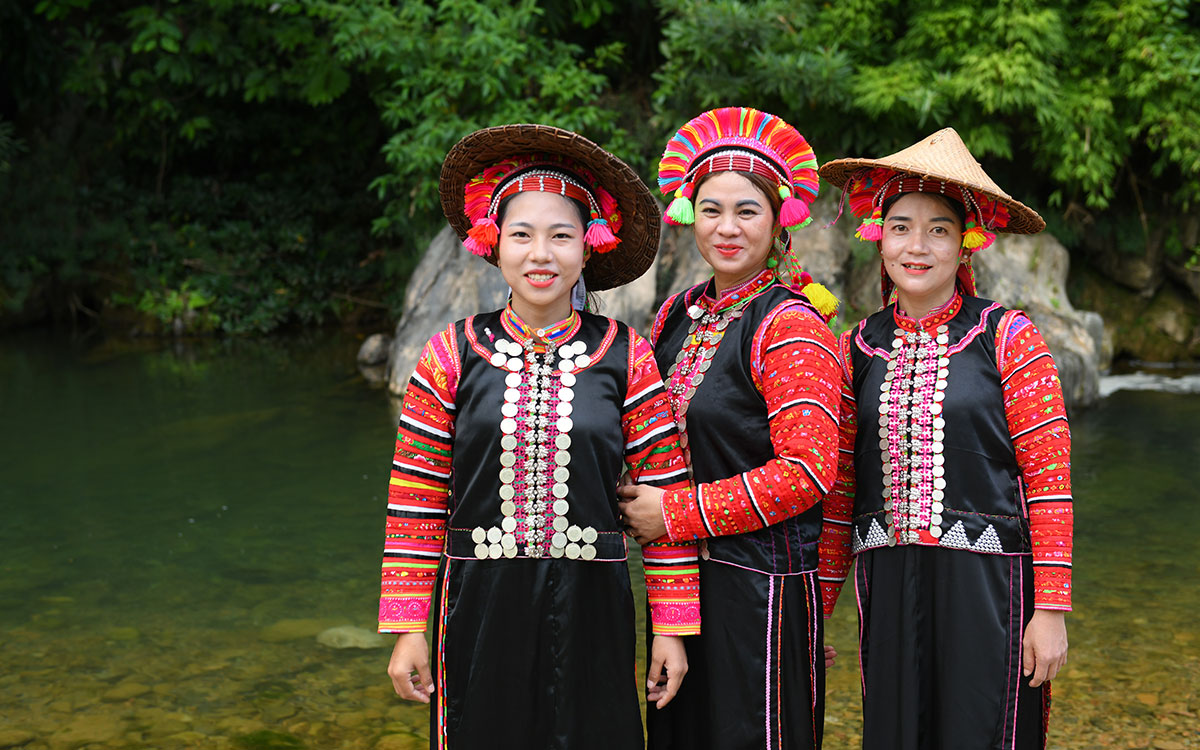LA HỦ ETHNIC GROUP
INTRODUCE
- General overview
The La Hủ ethnic group is one of several ethnic groups belonging to the Tibeto-Burman language, alongside the Hà Nhì, Phù Lá, Lô Lô, Cống, and Si La ethnic groups. The residential area of the La Hủ people covers a vast region situated in the bordering area among China, Vietnam, Laos, Thailand, and Myanmar.
In Vietnam, the La Hủ people reside predominantly in 44 villages within 5 communes (Pa Vệ Sử, Pa Ủ, Ka Lăng, Bum Tở và Nậm Khao) in Mường Tè district, Lai Châu province. These communes are situated in an area with an average altitude ranging from 500 to 1,000 meters and steep slopes. Consequently, La Hủ villages are located on mountain slopes, with streams flowing from higher altitudes down through the region.
The La Hủ people in Lai Châu province trace their origins to a branch of the La Hủ ethnic group from Kim Bình and Lục Xuân districts in Yunnan province, China. The first La Hủ people settled in this new area about 10 generations ago.
According to the population census data of April 1, 1989, the La Hủ ethnic group had 5,319 individuals.
Presently, the La Hủ ethnic group is among the minority ethnic groups with very few members. The current population of the La Hủ people in Lai Châu is over ten thousand individuals, making up approximately 2.67% of the total population of Lai Châu province, ranking eighth in population size within the province. The La Hủ ethnic group is concentrated in the communes of Mường Tè district (Nậm Khao commune: 481 individuals; Ka Lăng commune: 1203 individuals; Pa Vệ Sử commune: 2092 individuals; Pa Ủ commune: 2463 individuals; town: 19 individuals; Bum Tở commune: 2453 individuals). The number of La Hủ people accounts for 19% of the district’s population, ranking behind the Thái ethnic group (31.29%) and the Hà Nhì ethnic group (23.67%).
- Village space
In the past, due to their nomadic lifestyle, La Hủ ethnic group consisted of only a few households, secluded in remote mountainous regions. Upon adopting a more settled agricultural lifestyle, community settlements expanded to encompass several dozen households, where two or three lineages lived together. Neighborly relationships played a pivotal role in this ethnic group. Lineage relationships primarily functioned within marriage practices (prohibiting intermarriage within the same lineage), while communal ancestor worship ceremonies seemed to be absent (except within the La Hủ Na subgroup).
The La Hủ family structure primarily follows a two-generation model (parents and children). The ethnic group’s custom involves the bride moving entirely to the husband’s house after marriage. The head of the household is the male figure, and property is divided among the sons, while daughters receive dowry. Within the La Hủ family, only sons inherit the parents’ assets.
- Living space
Previously, the La Hủ people mainly lived in temporary houses, resembling shelters used for farming. When the resettlement and reclamation campaigns were essentially completed (by the end of the 1970s of the 20th century), the La Hủ ethnic group gradually became more populous, the economic lives of households became more stable, and their houses became more solid and spacious.
The houses of the La Hủ people typically consist of two or three rooms and two wings, surrounded by thick bamboo fences, with roofs made of thatched grass. Inside the house, it is divided into two sections: an inner and an outer section, separated by a bamboo wall running longitudinally through the center. The inner section is further partitioned into smaller compartments. The room on the right side is designated for guests, while the left side is for the homeowners (parents) and serves as the ancestral altar. In the middle, one or two rooms could be arranged as sleeping areas for the children. A column (“cột ma” or “cột thiêng”) is placed at the intersection between the longitudinal partition and the wall between the parents’ and children’s chambers. The outer section, opposite the homeowner’s room, serves as the kitchen, while the area opposite the children’s room is used for household items.
- Agricultural production activities
Before the complete liberation of the Northern region, the La Hủ people did not know how to cultivate wet rice. Cultivating upland fields was considered their main economic activity and primary source of livelihood. Overall, the La Hủ people’s fields (called “ha” or “da”) are primarily multi-cropped with the main crops being rice (chà) and corn (sa ma), alongside various vegetables such as beans, gourd, wax gourd, taro, cotton, and indigo trees. In recent years, cassava has quickly gained widespread popularity. The farming process of the La Hủ people is entirely similar to that of other shifting cultivation ethnic groups, meaning they follow stages such as field clearing, burning, planting seeds, tending, and harvesting. The La Hủ people choose locations for their fields in old forests with gentle slopes, close to water sources. The timing of field clearing depends on the geographical area, the climate of each region, and the biological characteristics of specific crop varieties. Always start by clearing the rice fields, then the corn fields, and finally the soybean and indigo tree fields.
- Livestock production activities
On their cultivated fields, rice (chà) is the primary and prevalent cereal crop in both local groups of the La Hủ people. Over time, through their life experiences, they have selected numerous rice varieties that exhibit stable productivity and adapt well to the natural environment. Their rice varieties are classified not only into two main types, sticky rice, and plain rice but also include different early and late-maturing strains.
The plain rice (chà sư) includes various red rice such as “chạ sư nhi, alu chu, klỗ giẻ;” as well as white rice like “chạ sư phu, mà cú vị già, mà cù đò ma, chà phu, chà na,...” Within this category, there is also “chà hồ cù,” a late-maturing rice variety characterized by relatively high productivity, resistance to pests and diseases, yielding white and fragrant rice grains.

















